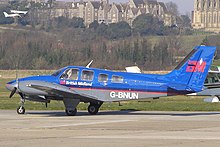This is a list of aviation-related events from 2004.
This is a list of aviation-related events from 1977.
This is a list of aviation-related events from 2001.

The de Havilland Express, also known as the de Havilland D.H.86, was a four-engined passenger aircraft manufactured by the de Havilland Aircraft Company between 1934 and 1937.
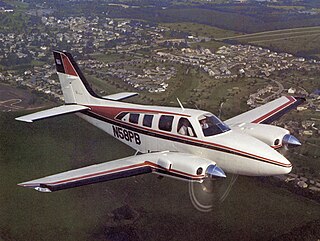
The Beechcraft Baron is a light twin-engined piston aircraft designed and produced by Beechcraft. The aircraft was introduced in 1961. A low-wing monoplane developed from the Travel Air, it remains in production.

The de Havilland DH.114 Heron is a small propeller-driven British airliner that first flew on 10 May 1950. It was a development of the twin-engine de Havilland Dove, with a stretched fuselage and two more engines. It was designed as a rugged, conventional low-wing monoplane with tricycle undercarriage that could be used on regional and commuter routes. A total of 149 were built; it was also exported to about 30 countries. Herons later formed the basis for various conversions, such as the Riley Turbo Skyliner and the Saunders ST-27 and ST-28.

The Royal Flying Doctor Service (RFDS), commonly known as the Flying Doctor, is an air medical service in Australia. It is a non-profit organisation that provides emergency and primary health care services for those living in rural, remote and regional areas of Australia who cannot access a hospital or general practice due to the vast distances of the Outback.

Essendon Fields Airport, colloquially known by its former name Essendon Airport, is a 305 ha public airport serving scheduled commercial, corporate-jet, charter and general aviation flights. It is located next to the intersection of the Tullamarine and Calder Freeways, in the north western suburb of Essendon Fields of Melbourne, Victoria, Australia. The airport is the closest to Melbourne's City Centre, approximately an 11 km (6.8 mi) drive north-west from it and 8 km (5.0 mi) south-east from Melbourne–Tullamarine Airport. In 1970, Tullamarine Airport replaced Essendon as Melbourne's main airport.

Ayers Rock Airport is situated near Yulara, around 463 km (288 mi) away from Alice Springs, Northern Territory, and 20 minutes drive from Uluru / Ayers Rock itself. An average of just under 300,000 passengers pass through this airport each year.

The de Havilland DH.84 Dragon is a successful small commercial aircraft that was designed and built by the de Havilland company.
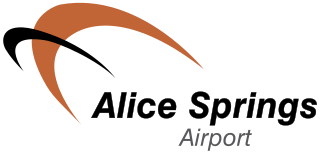
Alice Springs Airport is an Australian regional airport 7 nautical miles south of Alice Springs, Northern Territory. The airport was notably involved in Australia's second domestic airline hijacking, and later a suicide attack by a former airline employee which claimed the lives of four others.
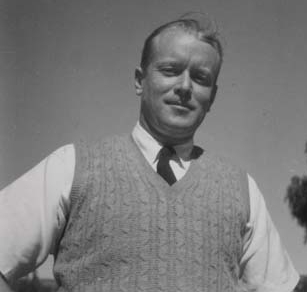
Edward John Connellan AO, CBE was an Australian aviator who founded Connellan Airways and was a pioneer of aviation in the Northern Territory.

Connellan Airways was an airline headquartered in Alice Springs, Australia. It operated scheduled flights as well other air transport services throughout the Northern Territory from 1939 to 1980.
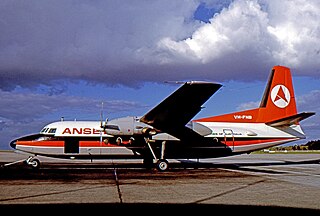
Ansett Australia Flight 232, on Wednesday, 15 November 1972, was a flight from Adelaide, South Australia aboard a Fokker Friendship bound for Alice Springs, Northern Territory. It was Australia's second aircraft hijacking, and resulted in the perpetrator's death by suicide.

The de Havilland Australia DHA-3 Drover is a small transport aircraft that was built by de Havilland Australia (DHA) in the 1940s and 1950s. The aircraft had some similarities with the two-engine British-built de Havilland Dove but used a trimotor configuration.

Rossair Charter was an air charter company based in Adelaide, Australia. In November 2013, it merged with Air South, another South Australia based charter company. In July 2018, the company was placed into voluntary administration.
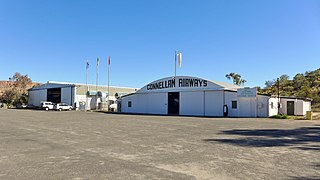
The Central Australian Aviation Museum is an aviation museum in Alice Springs, Northern Territory, Australia.
Ronald Nevill Damian Miller known almost exclusively as Damian Miller was a pilot and pastoralist who spent much of his life in Alice Springs. Miller helped found Connellan Airways as well as Argadargada and Hamilton Downs Stations.
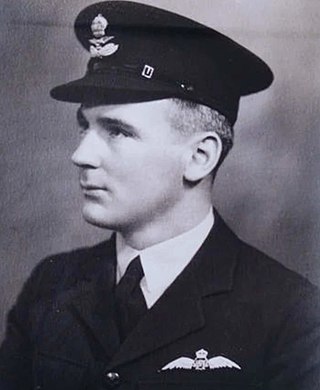
George Henry "Harry" Purvis, AFC was an Australian pioneer aviator, engineer, airline pilot, air-force pilot and author. He was the engineer responsible for maintenance of the famed Southern Cross aircraft. Purvis often flew as co-pilot with Sir Charles Kingsford Smith and was the last person to fly the Southern Cross. Purvis was co-pilot to P. G. Taylor on the first flight across the lower Pacific Ocean from Australia to South America, landing in Chile in 1951.
